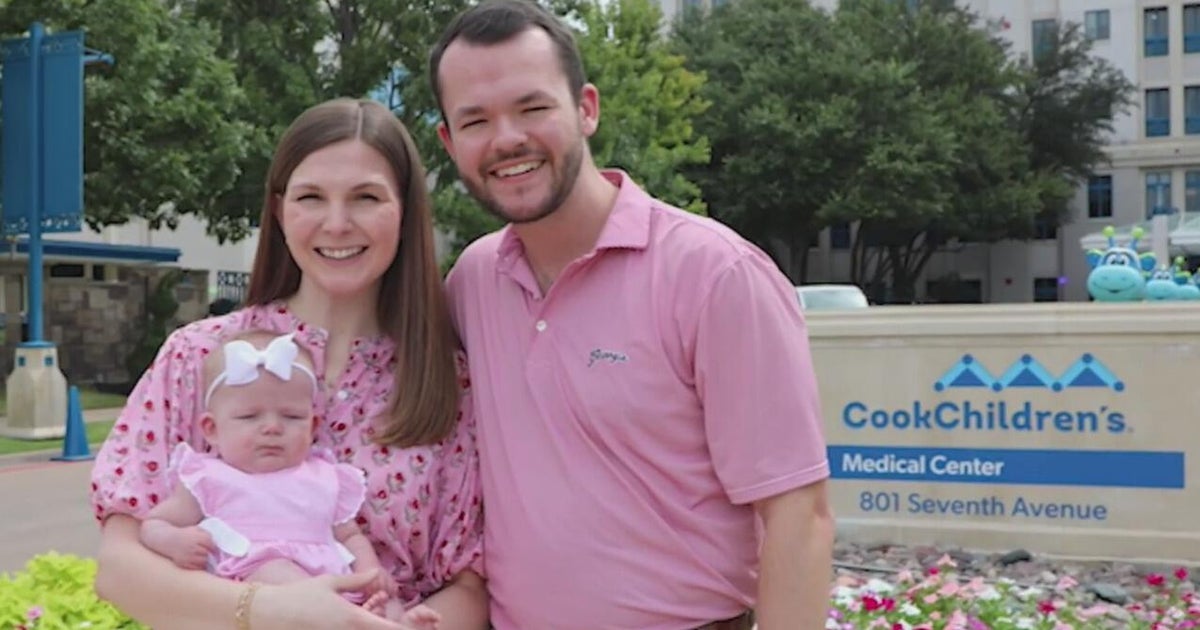As Many As 1 In 20 US Kids Harmed By Alcohol In The Womb, Study Says
(CNN) -- More children have been affected by drinking during pregnancy than previously thought, according to a study published Tuesday in the Journal of the American Medical Association.
Up to one in 20 American kids falls somewhere on the spectrum of disorders caused by maternal drinking, according to the study's more conservative estimate. But that number could be as many as 1 in 10, using another approach outlined in the study.
Fetal alcohol spectrum disorders are a group of conditions that may include abnormal growth and facial features, intellectual disabilities and behavioral problems, according to the US Centers for Disease Control and Prevention.
"We have long thought and believed that estimates that we had previously in the US were pretty gross underestimates," said Christina Chambers, one of the study's authors and a professor of pediatrics at the University of California, San Diego School of Medicine. "It's not an easy disorder to recognize."
Chambers and her colleagues say their results may be closer to reality than earlier studies. A "commonly accepted estimate" in the US is a prevalence of 1 in 100, the authors say, which is on par with the lower end of their study's findings.
But the new study's higher numbers were met with criticism from other experts, including Susan Astley, director of the Fetal Alcohol Syndrome Diagnostic and Prevention Network at the University of Washington.
"I don't have a very high regard for the numbers," said Astley, who also teaches epidemiology and pediatrics at the University of Washington. "I'm very disappointed to see this featured in the likes of JAMA."
Astley said the new study both overestimates and underestimates the prevalence in different ways, largely due to how the data were collected. She said she doesn't know whether the true prevalence is higher than previously thought but stressed that more research was needed.
"It's absolutely clear we need accurate estimates of this. In my opinion, we don't currently have that," she said.
A closer look
About one in 10 pregnant women in the United States, ages 18 to 44, reports having at least one alcoholic beverage in the past 30 days while pregnant, according to the Centers for Disease Control and Prevention.
"Those numbers have not been going down," Chambers said. "We haven't done a very good job in turning the tide on that."
In other countries, that number is considerably higher: One study found that rates of alcohol use during pregnancy were between 40% and 80% in the UK, Australia and New Zealand.
The new study sent experts to public and private schools in four US communities to test students for cognitive and behavioral problems, to interview mothers about their alcohol use and to analyze the children's growth and facial features.
The authors note that, though they consider these sites to be "diverse areas of the United States," they may not be representative of the country as a whole.
They categorized 222 first-graders with fetal alcohol spectrum disorders out of thousands who participated. Only two of these students had been previously diagnosed with such a disorder.
Previous research has illustrated how many children who fall on this spectrum -- perhaps the majority of them -- are not diagnosed correctly or at all.
Some researchers have praised Chambers and her colleagues for sending trained experts into communities to collect the data, using a method that is known as the "most reliable approach for estimating the prevalence of fetal alcohol spectrum disorders," according to a commentary published alongside the study by three researchers who have looked at these disorders on a global scale.
Astley disagrees, saying schools are the wrong place to do it.
"Screening for (fetal alcohol spectrum disorders) isn't like screening for scoliosis," Astley said, describing the stigma that might cause parents to not participate in the study. "It's difficult to ... just start asking moms and dads about their drinking."
"In some cases, there are families that know their child has been struggling," Chambers said, adding that finally having an answer can be "a relief in some cases. In others, you have to deal with 'is this something that I could have potentially contributed to?' "
Chambers and her colleagues note that not all students were given consent to participate; overall, roughly 60% did.
"Who are those 40%? Why are they choosing not to participate?" Astley asked. "No one would contest that it's the folks at highest risk."
The over-under
If higher-risk families were not participating in greater numbers, that would mean the prevalence of these disorders could be even higher, Astley said.
At the same time, Astley said that Chambers and her colleagues used "relaxed" criteria to identify fetal alcohol spectrum disorders -- criteria that stretched "down into the normal range." This could mean some of the data were overestimates, she said.
Chambers responded that there are multiple criteria used to diagnose these disorders, "some more stringent than others." She said the criteria her team used were a "reasonable balance" between identifying kids with the disorder and avoiding false positives.
One way Chambers' team identified the disorder was by looking for a combination of certain facial features and physical traits -- for example, a thin upper lip that is flat where most people have a groove. When a child met these criteria, the researchers did not necessarily require proof of alcohol exposure during pregnancy.
In the absence of these features, the researchers matched poor cognitive and behavioral test scores with information, largely from interviews, that the student's mother consumed alcohol during pregnancy.
But without a definitive blood test or biomarker for these disorders, "it's impossible to know what proportion of these deficits were caused by fetal alcohol exposure," the study authors said. It's possible that the authors saw a link that wasn't there for certain kids, which could also have led to overestimation, the study said.
Of the 222 children who met the researchers' criteria for fetal alcohol spectrum disorders, there were 27 cases of fetal alcohol syndrome, 104 with partial fetal alcohol syndrome and 91 with alcohol-related neurodevelopmental disorder.
Astley said she expected the difference between some of these numbers to be greater. At one study site, there were more children with fetal alcohol syndrome than alcohol-related neurodevelopmental disorder -- which Astley said would "never" happen.
"It could be that we underestimated number of cases of (the latter), as we required that the mother recall or be willing to confirm alcohol exposure at a certain level," Chambers said.
"I'm not sure if we know what that ratio should be."
Drinking during pregnancy
Drinking during pregnancy is one the most common causes of intellectual disability, costing the US billions per year, according to the Centers for Disease Control and Prevention.
But there's not much research on just how little a pregnant woman could drink without harming her fetus, according to a paper published last year.
Although many health organizations strongly advise against drinking while pregnant -- the American Academy of Pediatrics says no amount should be considered safe -- some controversial studies have suggested that light drinking might not be harmful for the baby's future health.
Chambers said that if two women drink the same amount during pregnancy, it's possible that only one might have an affected fetus. The full reasons why women have different susceptibilities are unclear, she said.
In a 2016 report, the CDC said women should avoid drinking completely if they are not using birth control and there is any chance they might be pregnant. It found that three in four women who wanted to get pregnant as soon as possible reported that they continued to drink alcohol.
"About half of all pregnancies in the United States are unplanned, and even if planned, most women won't know they are pregnant for the first month or so, when they might still be drinking," Dr. Anne Schuchat, current acting director of the CDC, previously told CNN.
Experts have long pushed for more research and education on what some say are widespread effects of drinking during pregnancy.
"This is something that needs to be done," Astley said. "This (new study) is not the way to do it."
Astley's past research screened foster children for fetal alcohol syndrome, finding that they had a prevalence 10 to 15 times greater than the general population. Since the state was their guardian, she said, the research avoided the problems of stigma and lower participation that school-based studies might face. Similar research is being replicated in other countries such as Australia and Canada, she added.
Both Astley and Chambers say that research on these disorders can help wage new efforts to educate future mothers, prevent new cases, improve current treatments and measure how well such initiatives work.
"Our hope that what this will do is raise this to the level on the national agenda where we think it should be," Chambers said.
The-CNN-Wire
™ & © 2018 Cable News Network, Inc., a Time Warner Company. All rights reserved.







